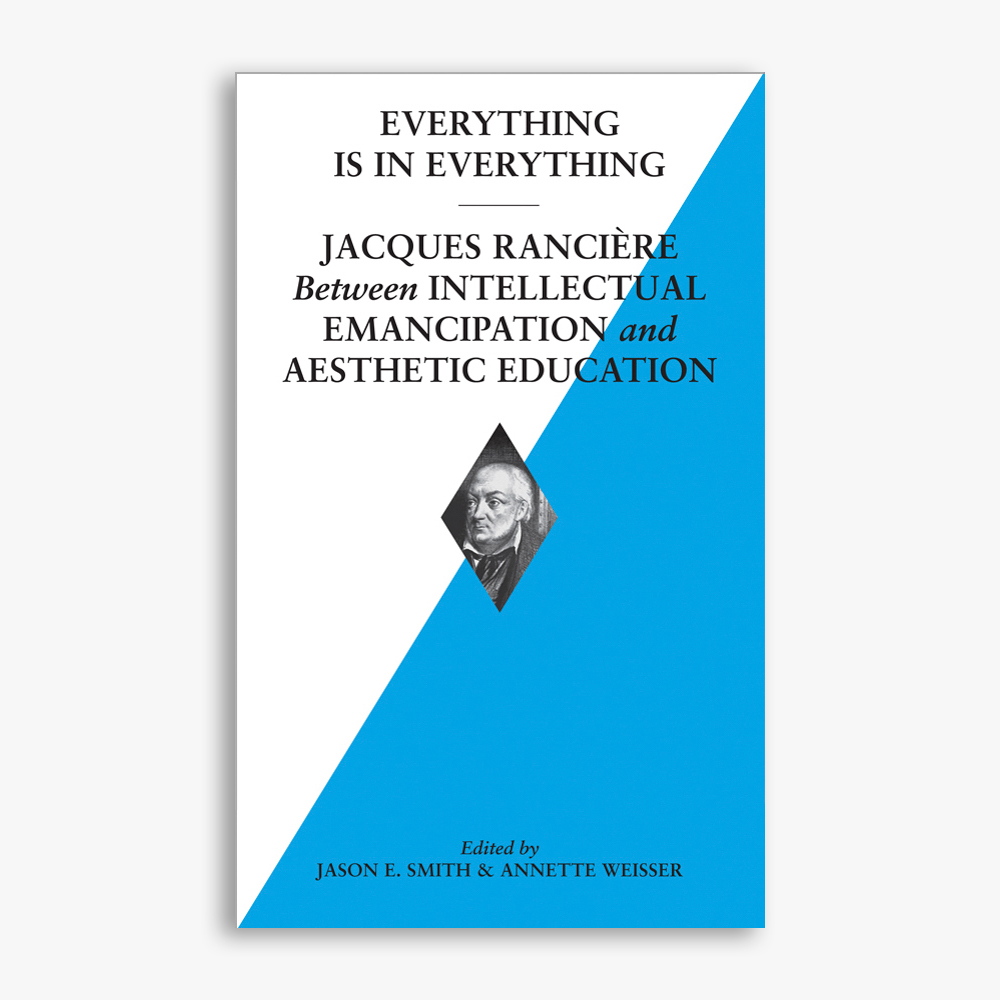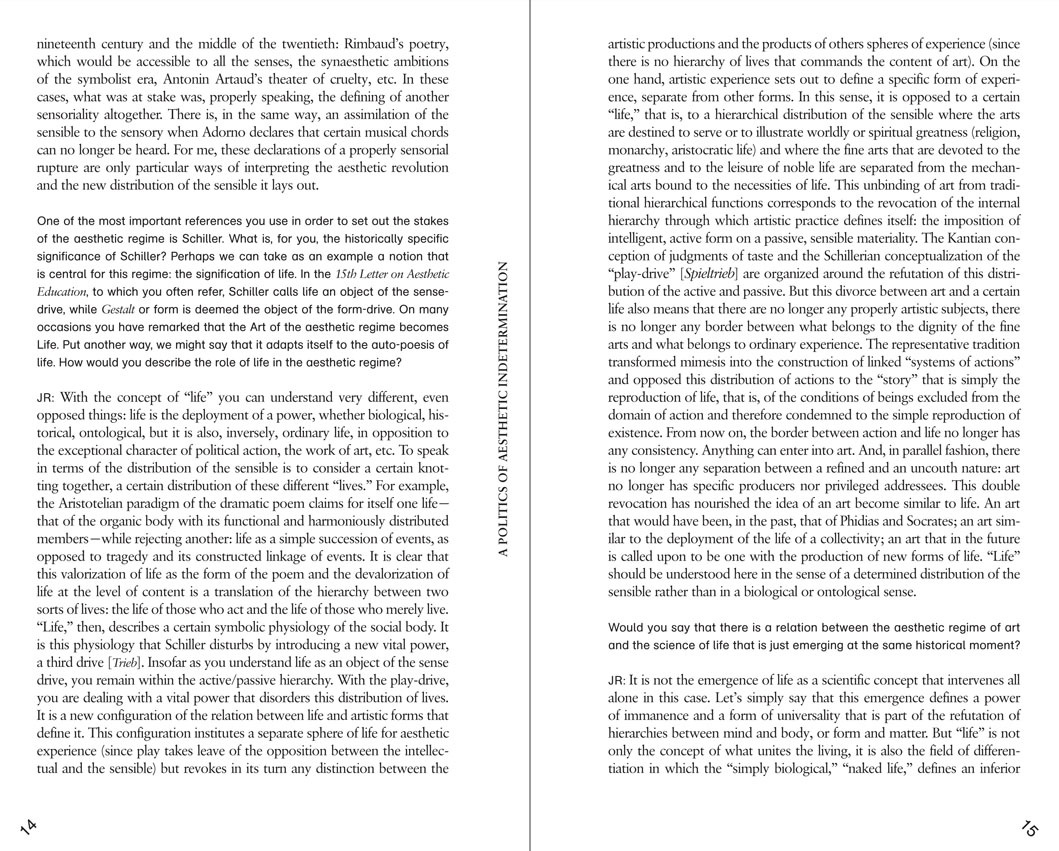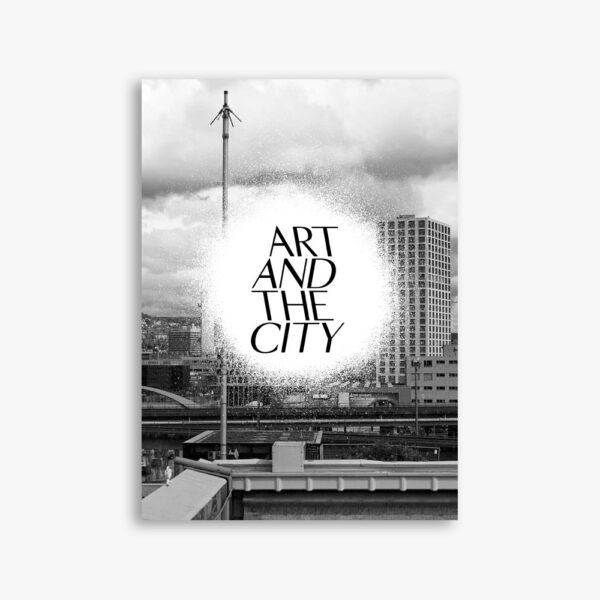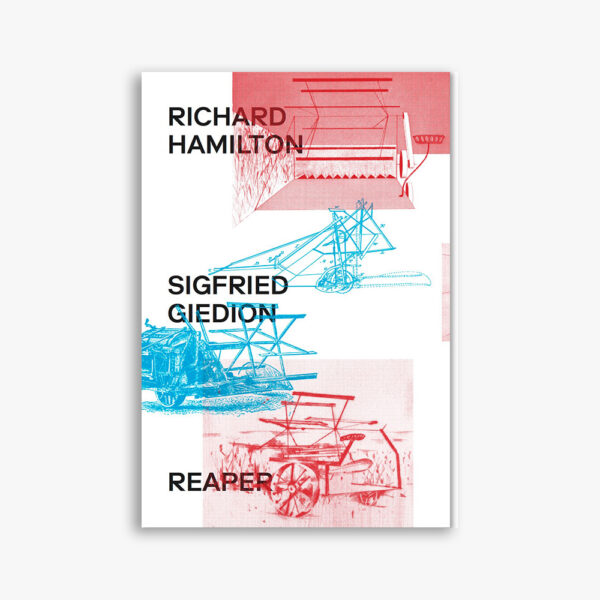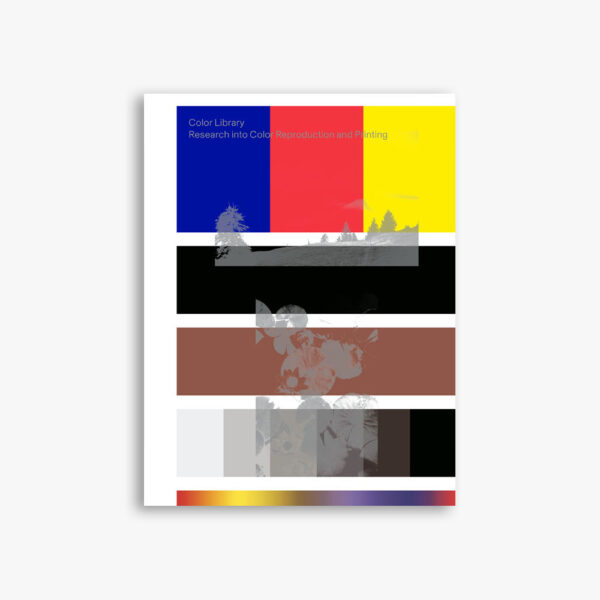Rancière and aesthetics
For Jacques Rancière, politics is not primarily the exercise of or struggle for power, but the institution of a certain type of space and time, a mode of visibility and intelligibility that creates a tear in the consensual fabric of a given form of collective life. Art institutes just such a space and time, in which the fundamental polarities of experience—activity and passivity, form and matter, appearance and reality—are suspended and transformed.
The essays collected in this volume, based on a symposium held at Art Center College of Design (Pasadena), consider the knot formed in Rancière’s work between aesthetics, politics, and education. From his earliest work (“The Lesson of Althusser,” 1974) to his magisterial book on the pedagogical theory of Joseph Jacotot (“The Ignorant Schoolmaster,” 1981), the theme of education has been at the center of Rancière’s concerns; his apparently recent turn to aesthetics, after the 1995 publication of “The Disagreement,” should in turn be understood as a continuation of his studies of the aesthetic experiments conducted during the post-work nights of 19th-century proletarians (“The Nights of Labor,” 1981).
The questions forming the horizon of this collection are therefore: what would it mean to propose a new aesthetic education of humanity today? How would the resurrection of this concept transform the current concepts of art, politics, and pedagogy? And to what extent is it necessary to return to the founding moments of aesthetic theory to rearticulate the relation between art and politics today.
Published with Art Center Graduate Press, Pasadena.
